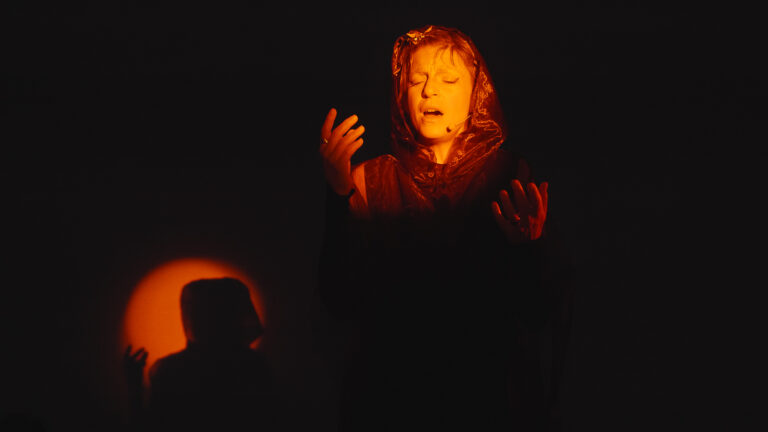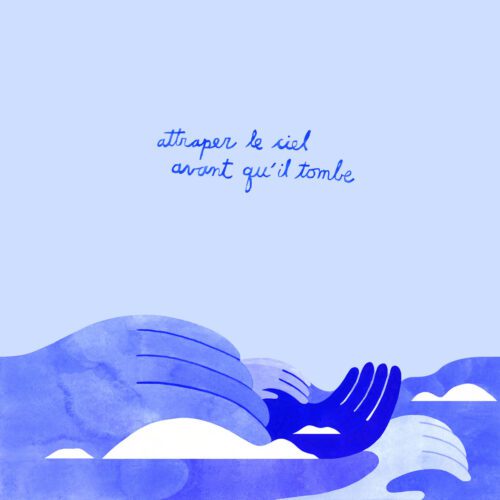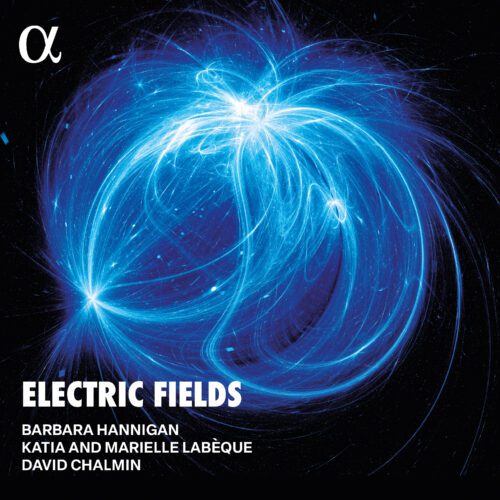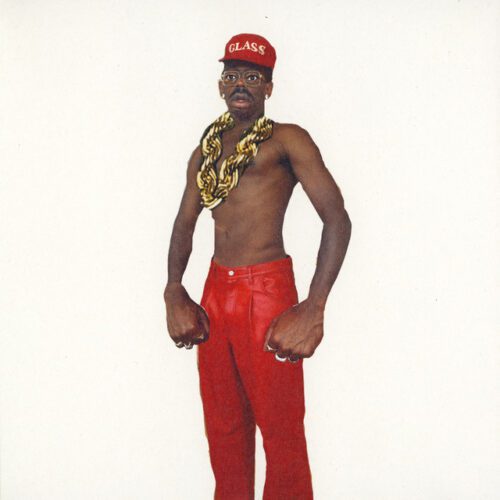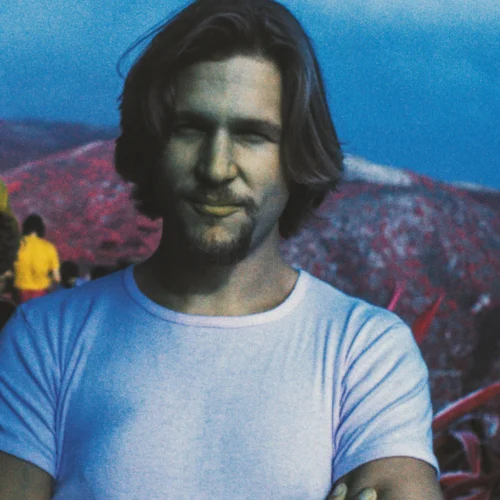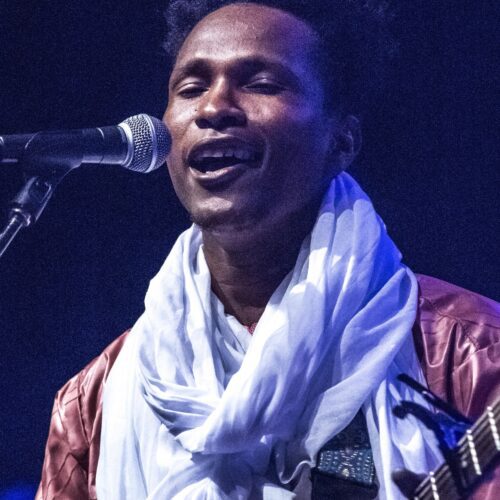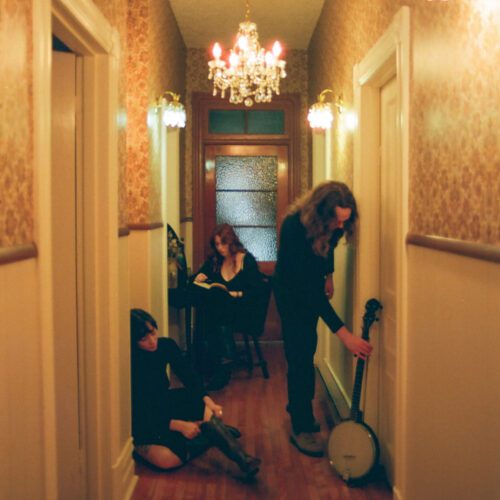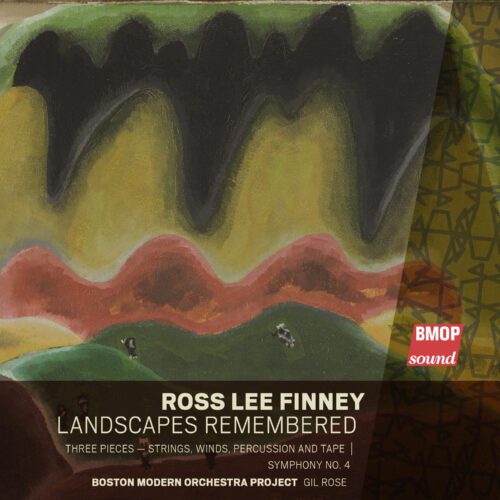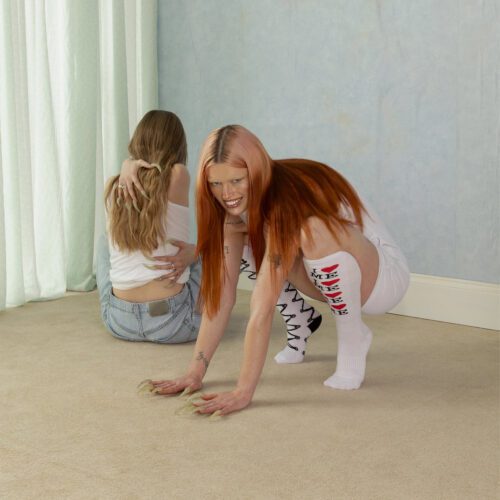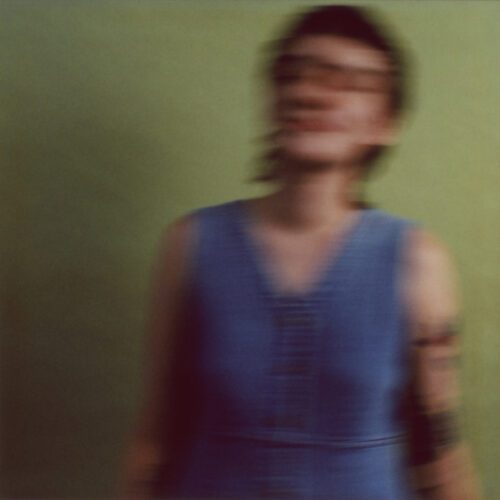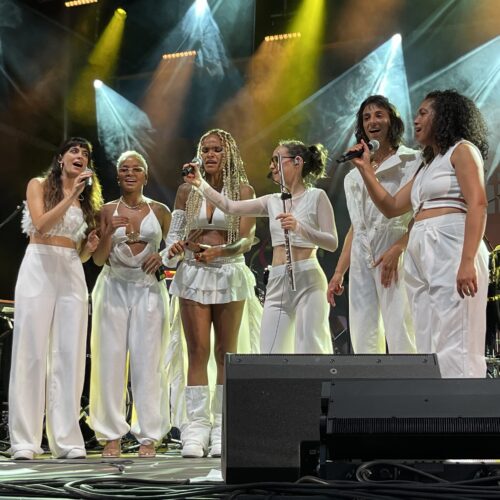Saturday 9 November saw the premiere of Sainte Marine, an opera by Katia Makdissi-Warren (of the OktoEcho ensemble), with the support of Chants Libres, opera company directed by Marie-Annick Béliveau.
Listen to my interview with Marie-Annick Béliveau about the character of Sainte Marine and the opera itself (in French) :
The opera is described as immersive, which is apt given that the audience and the artists are dispersed in the same spheric shared space: the dome of the SAT (Société des Arts Technologiques) in Montreal. What’s more, the artists move through the audience, who are free (sometimes forced) to change places, sit or stand, depending on their interest in one musician rather than another. The dome itself serves as a screen for various projections during the show. Some are pretty (drawings of flowers, plants, trees), others touching (candles accompanying an introspective musical passage towards the end of the work), but too often they are limited to spurts of coloured lines or sketched shapes that seem to severely under-use the modern potential of digital visual art.
The music evokes traditional Maronite songs from Lebanon (think Sister Marie Keyrouz), as Sainte Marine lived in what is now Lebanon around the 5th century. The vocal score evolves with simple and above all modal lines carried by the amplified voices of Marie-Annick Béliveau, a mezzo-soprano who is sometimes asked to deviate considerably in addition to singing and narrating, and a trio of male bass voices, Sainte Marine’s ‘brothers’ in the monastery (she was a women posing as a male monk all her life). What we hear is mostly ritual or incantatory chant, virtually devoid of any harmonisation, except for some polyphonic writing for the trio of male voices. The effect is certainly sometimes trance-like, but above all emotionally stunted. There were a few times when I thought I would have liked a fuller drama.

cr.: Camille Poirier
Sainte Marine, opéra immersif
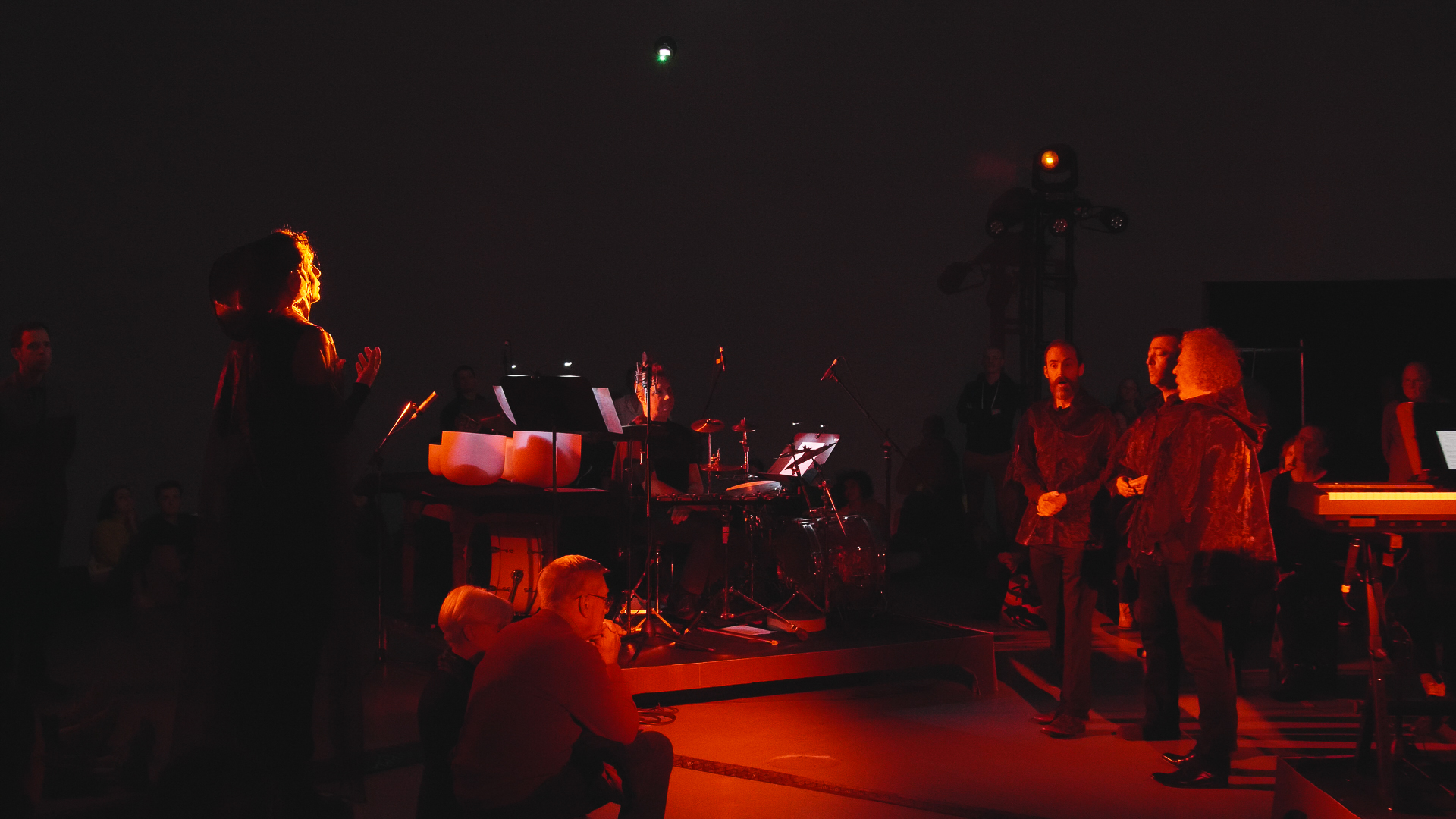
Sainte Marine, opéra immersif
cr.: Camille Poirier
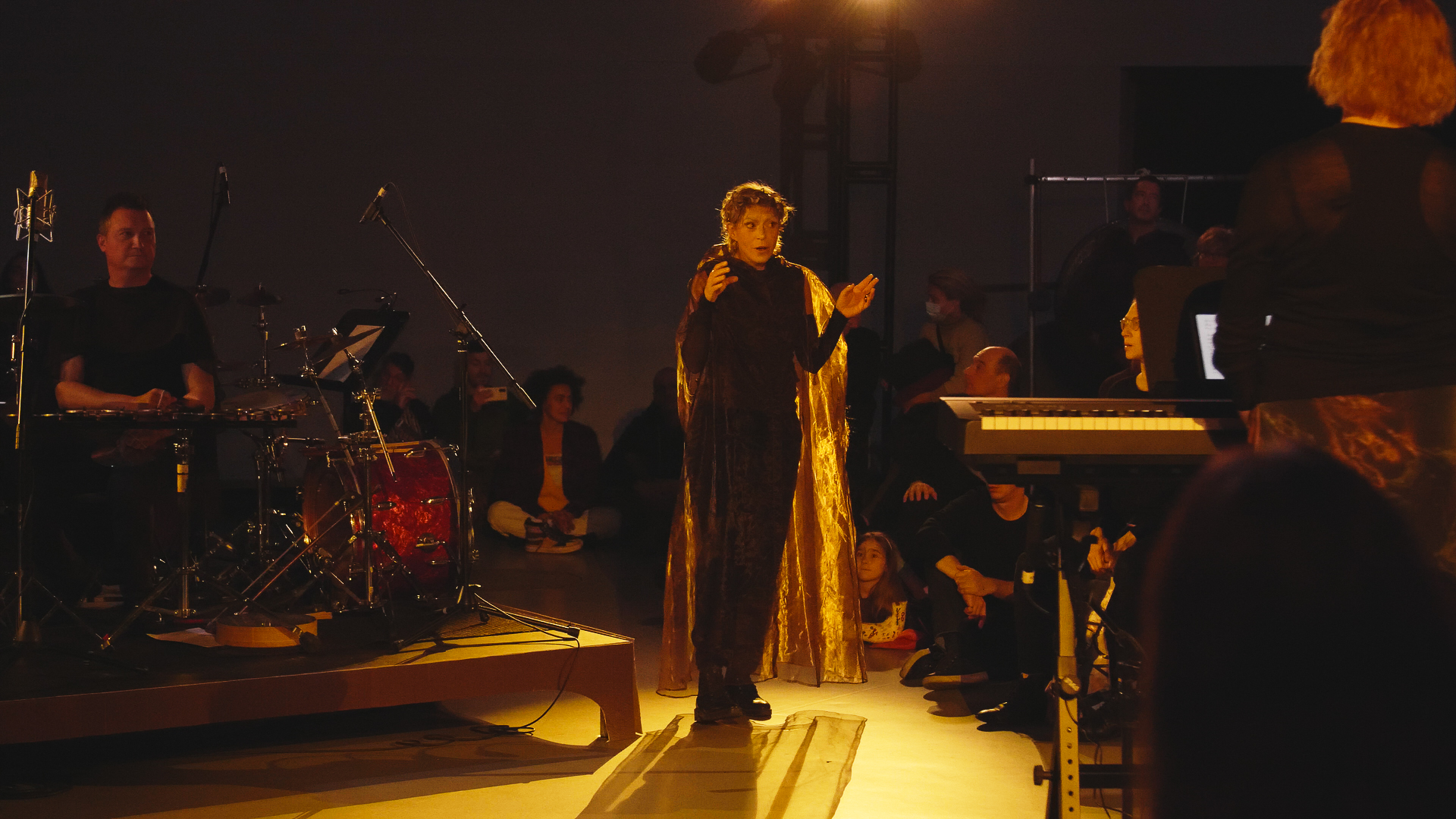
Bertil Schulrabe, percussions
Pamela Reimer, piano
cr.: Camille Poirier
Sainte Marine, opéra immersif
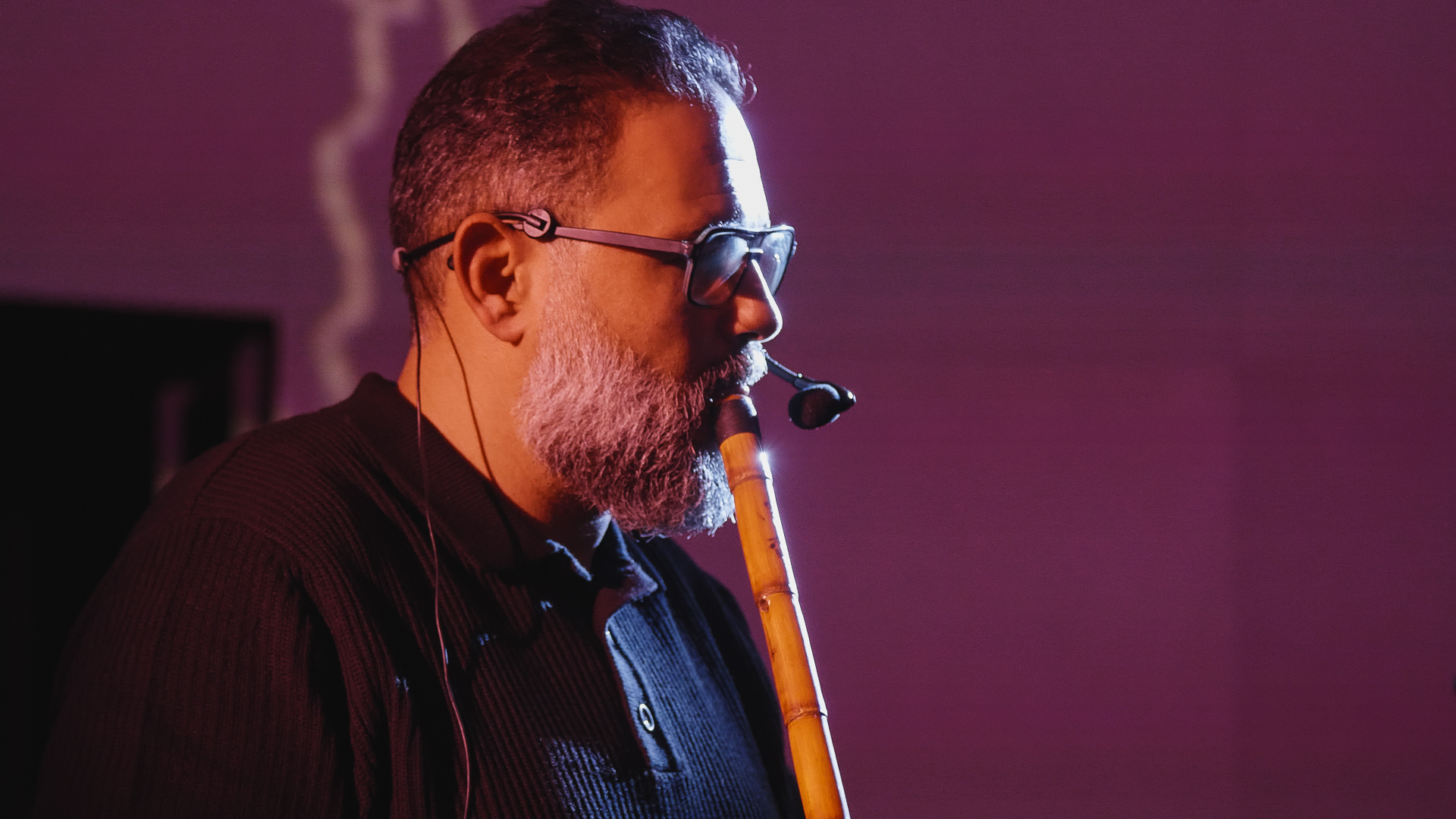
cr.: Camille Poirier
Sainte Marine, opéra immersif
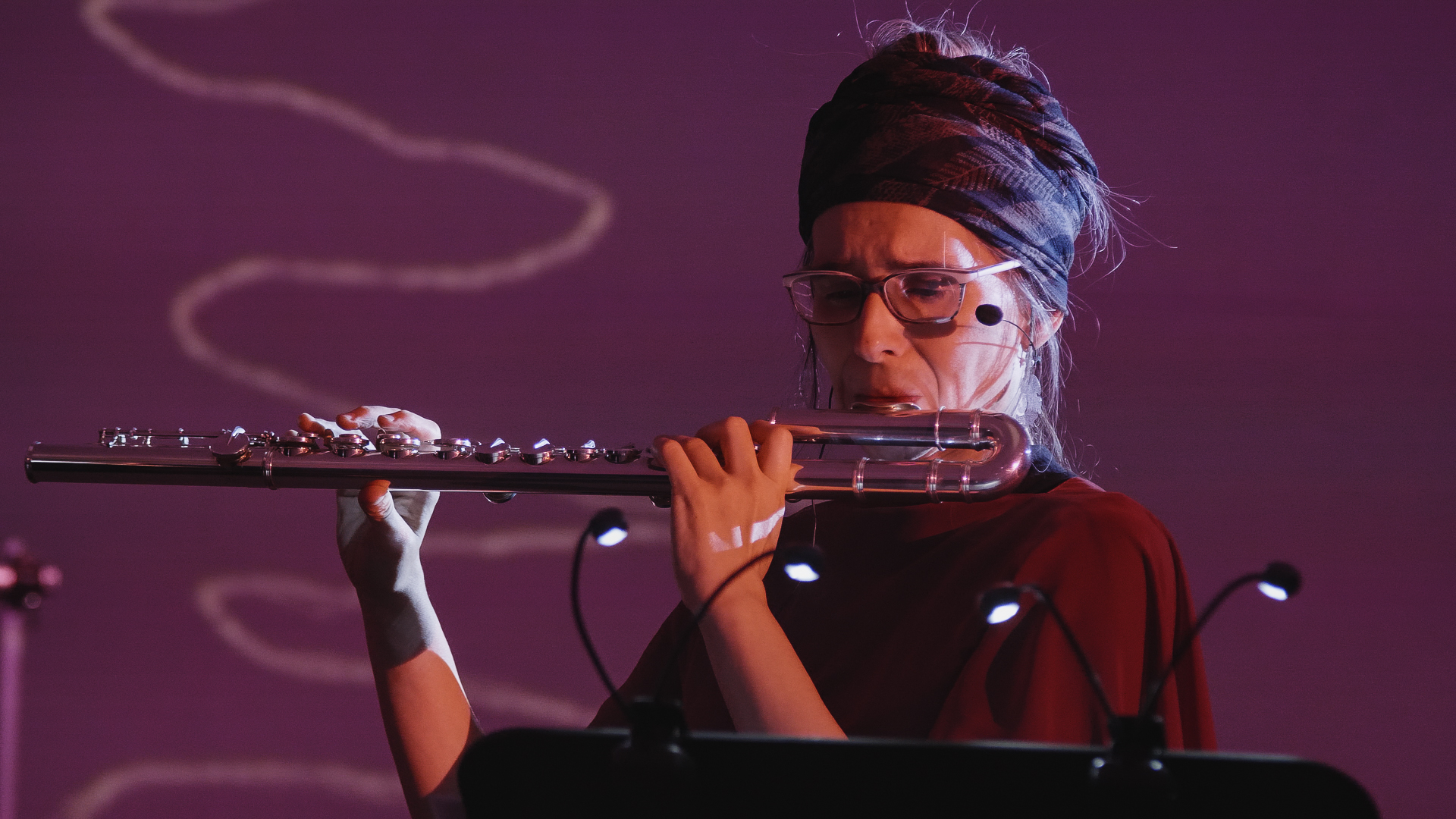
cr.: Camille Poirier
Sainte Marine, opéra immersif
The instrumental score is the one that spans the widest range of styles and effects. I particularly liked the flutes proposed by the composer: the classical traverso and alto played by Marie-Hélène Breault, and above all the traditional iranian nay superbly played by Aymen Trabulsi. They are the anchor in this distant world of the Levant, both culturally and temporally. Then the percussions (very good Bertil Schulrabe) and piano (Pamela Reimer) disguise the cultural authenticity initially sketched out with interventions that are sometimes contemporary, elsewhere jazz or slightly pop. All the stylistic personalities described so far occasionally overlap, but more often than not come together in a grouping for which I hesitate between the qualifiers of curious or happy. It’s a bit like tasting a dish that I like, but wonder what’s missing to make it really tasty.
The quality of the performers is undeniable, even if I felt Marie-Annick’s voice was a little fragile, even hesitant, in a few passages. Perhaps this was intentional, to better embody the character? Once again, I hesitate.
Sainte Marine is a very interesting proposition, but it will need some aesthetic refinement and tighter dramatic writing (both musically and on stage), and then some je-ne-sais-quoi still to be determined, to enable it to reach its full potential.
Line up :
Marie-Annick Béliveau, mezzo-soprano; Marie-Hélène Breault, flutes; Aymen Trabulsi, nay; Pamela Reimer, piano; Bertil Schulrabe, percussion; Michel Duval, David Cronkite and Clayton Kennedy, basses
Katia Makdissi-Warren, conception and composition
Marie-Annick Beliveau, conception, libretto and artistic direction
Charlie Poirier-Bouthillette, video design
Normal Studio, immersive production
Flavie Lemée, lighting design
Marianne Lonergan, set and costume design
Angélique Wilkie, dramaturgy
